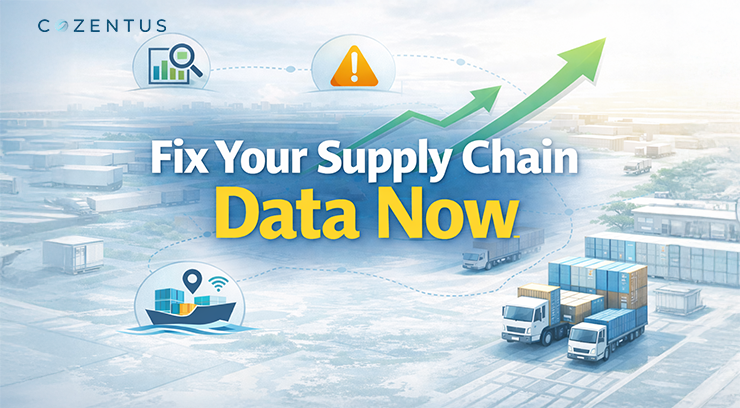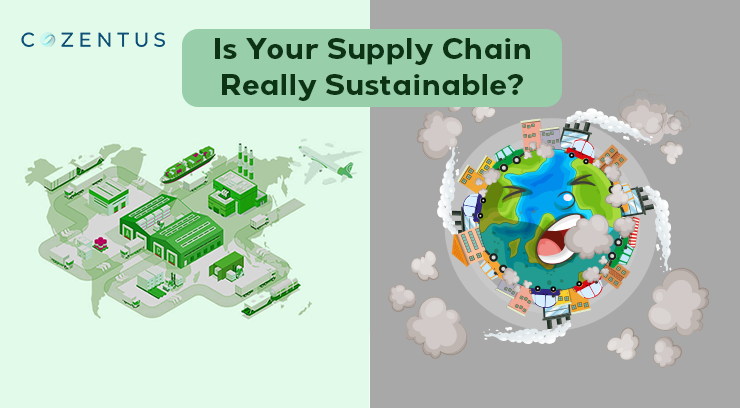Today raw materials are procured from one part of the world while manufacturing of products happens at a different location that provides favourable conditions for manufacturers. On top of that, the products are consumed at various parts of the world. There, however, is one thread that keeps this entire activity connected and that is logistics and supply chain management. In today's globalized world, the success of the organization can be determined by how well it can manage the entire activity from procurement to manufacturing to distribution. While many may consider logistics as the flow of goods, it is much more than that. There is also a flow of hundreds and thousands of documents that are exchanged within the geographies and different functions of logistics. Documents are sent and received from the point of origin to the point of consumption. They form an integral part of the business especially while making a final delivery. Consider a global shipment arriving at a port of destination with no prior documentation or a mismatch between documents and declared entity. Not only does it have a business impact, it can also raise the eyebrows of many government authorities. Proper coordination and communication between origin and destination is hence a paramount need. In this blog, you will get to know about 5 business scenarios that indicate the need for logistics document processing and how it can help to streamline the logistics process.
1. Disputes between stakeholders
As the logistics network involves different stakeholders like the shipper, consignee, CHA, terminal operators, and shipping lines, both at origin and destination, any minute miscommunication will lead to disputes. There have been many instances where wrong data filed at the origin has delayed the final delivery to the consignee, thus adding cost to the shipment. Logistics data processing can help in this situation by capturing correct data from the documents at the origin and in certain circumstances highlighting the error before it becomes urgent eliminating cost and delay.
2. Cost captured not as purchase order
As extremely common scenario is the lack of visibility of cost across multiple documents such as PO, invoices which come from multiple vendors for each activity at origin and destination. As extremely common scenario is the lack of visibility of cost across multiple documents such as PO, invoices which come from multiple vendors for each activity at origin and destination. This inhibits the business from having complete visibility of the cost as it will involve time and needs comparison of multiple documents and any miss in the cost will lead to revised invoice and undue credit advantages. With multiple stakeholders involved, communication and coordination often happen through individual text, email and calls. This lack of visibility of the cost leads to discrepancies when issuing a tax invoice to the customer. Logistics document processing can help capture the correct cost by comparing initial documents and can help in raising invoices and can improve customer experience. Often companies dedicate separate for this activity just to ensure invoices are issued to the customers with agreed cost. Logistics data processing can help them to focus on logistics operations and can ensure correct invoices being issued to the customer.
3. Removal of hands-on as well as recurring job
Today's logistics includes numerous together with repetitive job such as information feeding, record handling, file comparison and so on.- these hands-on jobs are vulnerable to hands-on mistake, worker inadequacy along with can result in dissatisfied client if procedure is not effectively recognized by the workers. Any type of redundancy in executing the above task can result in significant considerable organization effect along with it deserves keeping in mind that these prevail tasks which we execute for each freight. Logistics information handling can manage these hands-on jobs without mistakes in which system can be educated to deal with repetitive job including no redundancy causing satisfied consumer.
4. Settle Carrier billings
Do you know 30% of all products expenses have some error? In most circumstances this effects 3 PL with high price. Each time 3 PL receives carrier invoice they need to compare with the agreed rate and in case of any deviation they need raise the claim. It can be a time-taking procedure in situation deliveries are in high volume and also dedicated source requirement to be provided for contrasting service provider billings with the concurred price. We can utilize Logistics information handling to procedure right billings with no hold-up. It can assist to settle numerous files to inspect if the concurred price is matching with the price at which service provider has actually provided the billing.
5. Proper coordination
Another scenario which is common in logistics is proper coordination between origin and destination. In many circumstances there can be delay due to lack of proper coordination between the teams, documents not aligned, consignee not being contacted, custom duty not being filed finally incurring extra cost on the shipment. Logistics data processing can help to cater for this situation by capturing milestones of different activities at which they need to perform. Any deviation can raise early alarm which can help to keep the situation under control.
Recent Post
Subscribe to our newsletter
Stay updated on latest trends and news in the supply chain and logistics industry








